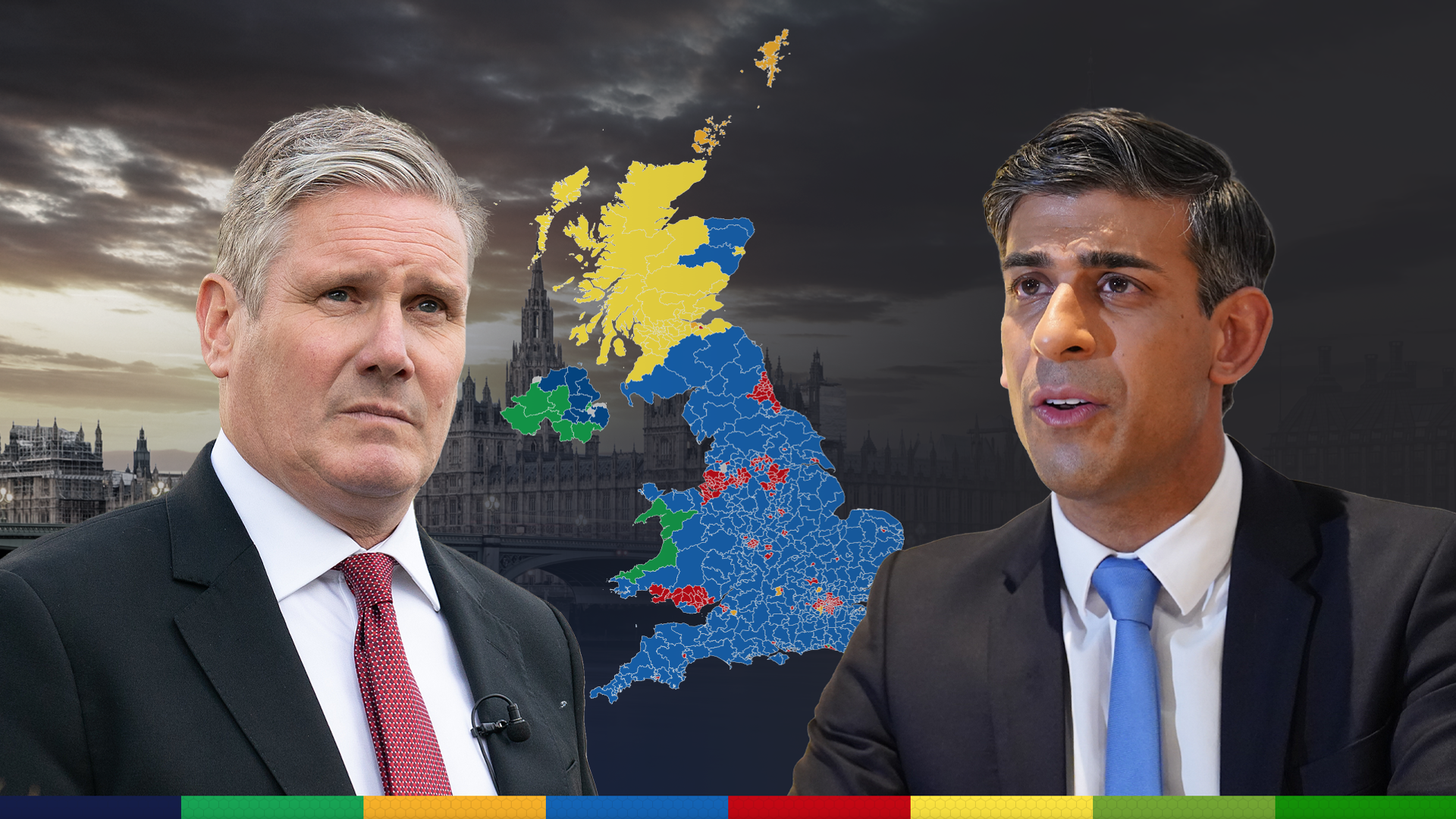The Conservatives secured an 80 seat majority in the 2019 general election.
They would have won by even more – defending a majority of 94 – if that vote had taken place on new boundaries that the 4 July election will be fought on.
They have lost several seats to defections and at by-elections since then, but it’s still a strong position to be starting from.
However, they are also more than 20 points behind in the polls just six weeks out from a general election. Never before has a government recovered from a poll deficit this large, this close to polling day.
After 14 years of Conservative government, is Keir Starmer about to take Labour to victory?
To secure an outright majority of the smallest possible size, his party need to take 125 seats on a record-breaking uniform swing of 12.7 percentage points, although making sizeable gains in Scotland or efficiently targeting key constituencies could lessen the challenge.
Here are a list of seats that Labour doesn’t hold, ranked by the smallest swing they would need to take it from the party that does:
If you’re not sure of the name of the seat you’re in now there have been boundary changes, use our postcode lookup to find out.
Read more: How the electoral impact of new battlegrounds are calculated
You can also see who would have won in that area if it had been in place in 2019, and what some of the key demographics of your new area are and how they compare to the rest of the country.
The Conservatives will defend 372 seats at this election, based on estimated results of the 2019 election if it had taken place on the new boundaries.
Labour are in second place in 276 of those.
Keep up with all the latest news from the UK and around the world by following Sky News
Will the challenge of Reform, who didn’t stand in Conservative-held seats in 2019, mean that they are more vulnerable in some of their safer seats on paper?
Here are a list of Conservative seats that have the smallest majorities, and who is in second place.
The Lib Dems are in second place in 92 seats overall, 85 of them are defended by Conservatives.
Most of these seats are in the south of England – 40 are in the South East and 25 in the South West.
These are the seats where the Lib Dems start second to the Tories, and where in the country they are.
The battle in Scotland is likely to be especially interesting this time around.
There is much speculation that Labour could take several seats from the SNP.
Labour are only defending one seat, but currently lead in the polls after John Swinney replaced Humza Yousaf as SNP leader and First Minister on 6 May.
Be the first to get Breaking News
Install the Sky News app for free
A swing of 10 points from the SNP would give Labour 15 additional seats, but a 13-point swing means 27 Labour gains.
Here are all the seats that the SNP are defending and what swing is required for them to lose to the second-placed party in each.
The Sky News poll tracker currently has the Conservatives on 23.2%, with Labour on 44%, and Reform rising above the Lib Dems as the third-placed party on 11.2%.
Rishi Sunak will of course be hoping that his party can narrow that 21-point Labour lead over the next six weeks of the campaign.
The new boundaries post interesting challenges for all parties, read some of our analysis from earlier in the year here:
The Data and Forensics team is a multi-skilled unit dedicated to providing transparent journalism from Sky News. We gather, analyse and visualise data to tell data-driven stories. We combine traditional reporting skills with advanced analysis of satellite images, social media and other open source information. Through multimedia storytelling we aim to better explain the world while also showing how our journalism is done.






